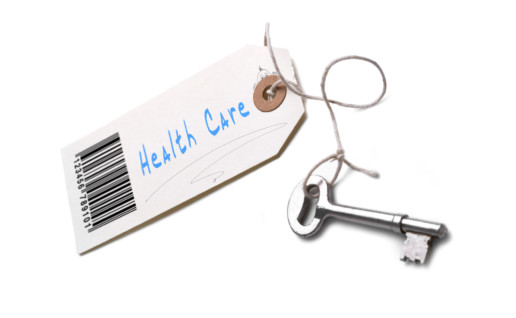HSAs on the Rise, but Employees Need to Know More About Them
Are your employees aware of the many benefits and features associated with HSAs? Check out this great article by Marlene Y. Satter from Benefits Pro on why it is important employees are knowledgeable about HSAs, so they can prepare for their health care expenses while planning for retirement.
According to Fidelity Investments, health savings accounts — and the assets within them — are rising quickly, as both employers and employees try to find ways to pay for health care. Still, a number of the features of HSAs are still underutilized.
While Fidelity says that assets in its HSAs rose 50 percent in the past year, now topping $2 billion, and the number of individual account holders rose 46 percent during the same period to 657,000, it points out more work still needs to be done on showing employees the advantages of such accounts.
Since it’s estimated that couples retiring today could need $260,000 — perhaps even more — to cover their health care costs during retirement, the need for a way to save just for health care expenses, aside from other retirement expenses, is becoming more urgent.
HSAs offer a tax-advantaged way to set aside more money than a retirement account alone provides — and people who have both tend to save more overall, with 2016 statistics indicating that people who had both defined contribution and HSA accounts saved on average 10.7 percent of their annual income in the retirement account. Those with just a DC account saved on average 8.2 percent in it.
People are mostly satisfied with HSAs — 80 percent say they are, while 76 percent are satisfied with the ease of using it HSA for medical expenses, 77 percent with the quality of their health care coverage and 77 percent with how the plan helps them manage their health care costs.
But that doesn’t mean they’ve got all the ins and outs figured out yet; 39 percent mistakenly believe that they’ll lose unspent HSA contributions at the end of the year. Yet unlike contributions to health flexible spending accounts (FSA), unspent contributions to HSAs roll over from year to year.
Still, employees are learning that HSAs can provide them a means of saving that’s not restricted to cash. While it’s still not common, more people are putting HSA money into investments that can then grow toward covering longer-term health expenses, but employers, says Fidelity, can do more to educate workers on such an option. Nationally, only 15 percent of all HSA assets are invested outside of cash.
See the original article Here.
Source:
Satter M. (2017 May 26). HSAs on the rise, but employees need to know more about them [Web blog post]. Retrieved from address https://www.benefitspro.com/2017/05/26/hsas-on-the-rise-but-employees-need-to-know-more-a?ref=hp-news
Employees Look to Employers for Financial Stability
Do your employees depend on their pay and benefits for their financial security? Find out in this great article by Nick Otto from Employee Benefit News on what employees depend on from their employers to support their financial well-being.
As the American dream of financial security continues to slip out of reach for many U.S. workers, employers — seen as trusted partners by employees — will need to step up to restore faith in retirement readiness.
Only 22% of individuals described themselves as feeling financially secure, Prudential says in its new research paper, and there is growing acceptance among employers that there is significant value in improving employees’ financial wellness.
Aspirations are modest, says Clint Key, a research officer in financial security and mobility at The Pew Charitable Trusts. Between economic mobility or financial stability, an overwhelming 92% of workers say they want stability.
“Four in 10 don’t have the resources to pay for a $2,000 expense,” he said Tuesday, at a joint financial wellness roundtable sponsored by Prudential Financial and the Aspen Institute in Washington, D.C. More alarmingly, employees don’t have the income to last a month if they were to lose their job.
Still, Key adds, it isn’t so much the number of dollars in the bank, but the peace of minds that savings buy them.
And employers are feeling the repercussions of the growing stressors in the workplace.
“People who are stressed about finances are five times more likely to take time off from work to deal with personal finances,” added Diane Winland, a manager with PricewaterhouseCoopers. “Three to four hours every week go to handling personal finances, and these employees are more likely to call out sick from work.”
The security levers once in place, such as home equity, are going away and it’s becoming much more difficult for workers to handle a financial emergency, she added.
The good news, however, is employers get it, she said. “They understand employee financial wellness is tied to the bottom line and it behooves them to invest in their employees,” said Winland. “The conundrum is how to deploy and what to deploy in their programs. Is it counseling? Coaching? Is it a new snazzy app that comes out. The key is there is no silver bullet.”
So, what is there to do?
Each employer has a unique business model and employee base, and, therefore, faces different challenges when implementing a financial wellness approach, Prudential’s paper notes. “Employers should design financial wellness programs that are informed by insights into the unique financial needs of their employees, successfully educate and engage employees, and help employees take concrete actions to improve their financial health. We encourage employers to discuss financial wellness with their benefit consultants or advisers.”
And, added Robert Levy, managing director at the Center for Financial Services Innovation, just talk to your employees. “They’re open to discussing their financial challenges,” he said, and employers can engage these conversations through numerous ways: surveys, one-on-one talks, focus groups.
Prudential stepping up
To try to change the current unease in financial security, Prudential Tuesday also announced its expansion of worksite tools for employers to enable them to analyze the financial needs of their workforce and offer the employees a personalized interactive experience that includes videos, tools, webinars and articles that empower them to manage their financial challenges.
In addition, Prudential has launched a $5 million, three-year program in partnership with the Aspen Institute — a Washington, D.C.-based, non-partisan educational and policy studies organization — to promote employees’ financial security.
“The investment highlights the need to increase the national discourse about greater economic access for employees as they bear increasing risk and responsibility for their short-term and long-term financial security,” said Prudential.
See the original article Here.
Source:
Otto N. (2017 May 18). employees look to employers for financial stability [Web blog post]. Retrieved from address https://www.benefitnews.com/news/employees-look-to-employers-for-financial-stability
Millennials are Saving for 'Financial Freedom,' not Retirement
Did you know that more millennials are skipping saving money for their retirement? Take a look at this interesting article by Marlene Y. Satter from Benefits Pro on how millennials are focusing on saving for their lifestyles instead of retirement.
Well, at least millennials are saving.
According to the Spring Merrill Edge Report from Bank of America Merrill Edge, 63 percent of millennials are socking it away in the name of financial freedom: the amount of savings or income they need to live the lifestyle they want.
GenXers and boomers, on the other hand, are saving up to get out of the workplace—with 55 percent of them working toward that goal.
Younger people are apparently being driven by FOMO—or fear of missing out, with their top goals a dream job ((42 percent, compared with 23 percent of older workers) and traveling the world (37 percent, compared with 21 percent of older workers).
Millennials have also relegated marriage and parenting lower down on the priority list, with just 43 percent looking forward to wedding bells, compared with 51 percent.
Those aren’t the only things they’re focusing on. That FOMO mindset is also driving millennials to spend now on traveling (81 percent), dining out (65 percent) and exercising (55 percent). Interestingly, however, they’re still managing to save more than older generations, with 36 percent stashing more than 20 percent of their annual salary.
Of course, that doesn’t mean that everyone is doing a bang-up job of saving money; overall, 42 percent of respondents are saving less than 10 percent of their salary, and 7 percent don’t save at all.
And many lack confidence in being able to cope with “what-if” scenarios: 71 percent are not very confident they could hit financial goals in the event of a divorce (although just 5 percent are planning for the possibility), 64 percent don’t think raising a family goes hand in hand with financial success, and just 23 percent are saving for a family; and 48 percent are not very confident about achieving their goals if they outlived their significant other.
They’re apparently not all that sanguine about financial wisdom, either with 48 percent believing that financial education should be a requirement. Not a bad idea—particularly since 29 percent of respondents believe that, in the future, 401(k)s will not be the “gold standard” in retirement investing.
See the original article Here.
Source:
Satter M. (2017 May 19). Millennials are saving for " financial freedom" not retirement [Web blog post]. Retrieved from address https://www.benefitspro.com/2017/05/19/millennials-are-saving-for-financial-freedom-not-r?ref=hp-top-stories
Helping Your Employees Protect Against Identity Theft
Are you doing enough to help your employees protect themselves from identity theft? Make sure to take a look at this article by Irene Saccoccio from SHRM on what employers can do to protect their employees from identity theft.
Social Security is committed to securing today and tomorrow for you and your employees. Protecting your identity and information is important to us. Security is part of our name and we take that seriously.
Identity theft is when someone steals your personally identifiable information (PII) and pretends to be you. It happens to millions of Americans every year. Once identity thieves have your personal information they can open bank or credit card accounts, file taxes, or make new purchases in your name. You can help prevent identity theft by:
- Securing your Social Security card and not carrying it in your wallet;
- Not responding to unsolicited requests for personal information (your name, birthdate, social security number, or bank account number) by phone, mail, or online;
- Shredding mail containing PII instead of throwing it in the trash; and
- Reviewing your receipts. Promptly compare receipts with account statements. Watch for unauthorized transactions.
It is important that your employees take the necessary steps to protect their Social Security number. Usually, just knowing the number is enough, so it is important not to carry your Social Security card or other documents unless they are needed for a specific purpose. If someone asks for your employees’ number, they should ask why, how it will be used, and what will happen if they refuse. When hired, your employees should provide you with the correct Social Security number to ensure their records and tax information are accurate.
If your employees suspect someone else is using their Social Security number, they should visit IdentityTheft.gov to report identity theft and get a recovery plan. IdentityTheft.gov guides them through every step of the recovery process. It’s a one-stop resource managed by the Federal Trade Commission, the nation’s consumer protection agency. You can also call 1-877-IDTHEFT (1-877-438-4338); TTY 1-866-653-4261.
Your employee should also contact the Internal Revenue Service (IRS), and file an online complaint with the Internet Crime Complaint Center at www.ic3.gov.
Don’t let your employees fall victim to identity theft. Advise them to read our publication Identity Theft and Your Social Security Number or read our Frequently Asked Questions for more information. If you or an employee suspects that they’re a victim of identity theft, don’t wait, report it right away!
See the original article Here.
Source:
Saccoccio I. (2017 May ). Helping your employees protect against identity theft [Web blog post]. Retrieved from address https://blog.shrm.org/blog/helping-your-employees-protect-against-identity-theft
Advisers Seek a Tech Solution to Financial Wellness
Have you been looking for a new solution to increase your client's investment into their financial well-being? Check out this great article by Cort Olsen from Employee Benefits Advisors on how advisers are using technology to help their clients invest in their financial wellness.
With many employers taking advantage of wearable wellness devices such as Fitbits and Apple Watches, advisers and consultants say they would like to see a similar platform that will efficiently monitor a person’s financial wellbeing.
“For physical wellness there are health assessments like biometric screenings to gather information and then there is the wearable data that tells people where they need to be to stay on track with their health goals,” says Craig Schmidt, senior wellness consultant for EPIC Insurance Brokers & Consultants. “The difference with the financial piece is that there isn’t a way to track users’ spending habits or monitoring their retirement funding to make their financial status more budget friendly.”
While Schmidt says he has not been able to find a platform that monitors financial status at such a personal level, John Tabb, chief product officer of Questis, has put together a platform that manages to gather data and make suggestions on what employees should be focusing their investments on such as paying off student loan debt or investing in their Roth IRA.
Tabb estimates that there are roughly 30 companies that call themselves financial wellness firms but adds that none of them are “holisitic.” “Not to say that they are not good, but there are only a handful of companies that can allow advisers at financial institutions to utilize their platform as a tool,” he says.
Saving for retirement vs. paying off student debt
Shane Bartling, retirement consultant for Willis Towers Watson, says they have developed a program with their clients that addresses gaps in the market and increases the value of the overall lineup of financial well-being services offered by employers generally around retirement readiness.
“As a result of requests from clients and the needs we have identified with our consulting work, we have built out a technology solution to compliment the line-up of other resources that clients have available,” Bartling says. “We wanted to find the indicators of poor financial wellbeing in the workforce, how to measure it and then how do we engage the parts of our workforce that are going to see the highest value from the resources we are providing.”
The WTW program offers clients an initial assessment from an adviser to determine where employees are struggling the most with their finances. “There is a way to look at behaviors employees are signaling when they are in a poor financial situation,” Bartling says. “They begin to do things like using loans, taking hardship withdrawals and then ultimately you see issues like wage garnishment tend to pop up on the radar and are opting out of the 401(k).”
SoFi has expanded its business focus from student loan refinancing firms into the workspace by helping employers offer a student loan repayment benefit.
“Looking at the employee benefits space today, student loans are generally a pretty big hole in most employers benefit offerings,” says Catesby Perrin, vice president of business development at SoFi. “The main stays of employee benefit offerings are healthcare and 401(k), which we all know are essential, but in many respects don’t address the most pressing financial concerns of the largest demographic in the workforce, which are millennials.”
Perrin adds that 401(k) and other forms retirement saving is imperative for everyone in the workforce, however retirement is not a top priority for millennials due to other financial stressors that are taking place in their day-to-day lives.
“As great as a 401(k) is and how important it is intrinsically, if you have $500 or $800 a month due in student loan payments, which is totally plausible for somebody coming out of undergrad today, the 401(k) is a total luxury,” Perrin says. “Most employers are not doing much about student loan problem, so we are offering two primary benefits today for employers… a student loan refinancing benefit and a benefit set for employers to help pay down the principle balance of their employee’s loan.”
Alternative tech gaining traction
One option is the increasing popularity of mobile push notifications. Ayana Collins, wellness consultant out of EPIC’s Atlanta office, says she is seeing a greater response from users who utilize these alerts on their smartphones to view wellness tips and strategies that they may not read if they are delivered in the form of an e-mail.
“Employees receive thousands upon thousands of e-mails and one more e-mail coming from HR or from a wellness company may not be opened,” Collins says. “If they receive a push notification from their mobile phone they are more likely to check out what financial wellness tips we are sending to them.”
Privacy invasion?
Meanwhile, new legislation determining how wellness plans are regulated has sparked a renewed interest in finding a streamlined financial wellbeing platform.
Shan Fowler, senior director of employer portfolio and product strategy at Benefitfocus, says legislation such as the Employer Participation in Repayment Act and the Preserving Employee Wellness Programs Act, will help fuel the creation of a financial wellbeing platform.
“Financial regulation is very similar to healthcare regulation,” Fowler says, “due to so many branches that are contingent with legislative support. Seeing bipartisan support for this national epidemic [has me feeling] very optimistic.”
However, employees may not be as enthusiastic. Many workers are concerned about the level of data employers could have access to, seeing it as an invasion of privacy, Fowler adds.
“I think you need to put yourself into the shoes of the employee and ask if I want my company to have access to my personal information,” he says. “That speaks to that very fine line employers have to walk of having their employees’ best interests in mind, but not going too far into a ‘big brother’ mentality.”
Tabb says that while the Questis platform does offer individual advice on financial direction based off an initial assessment, the data collected is stored in an aggregate form that protects employees’ personal information from being viewed by their superiors or colleagues.
“If the employer wants some data, they are going to pay for it to help them make decisions, but it is all on an aggregate level,” Tabb says. “There is certainly a perception that needs to be addressed to ensure employees that their data is safe and that nothing is being shared with their employer that does not need to be shared.”
Both Bartling and Perrin also say their platforms offer data to employers only in an aggregate form to give them an idea of how many employees are utilizing the benefit and also the projected success rates, but when it comes to the personal finances of each individual employee, security is in place to ensure private financial information is protected.
EPIC’s Collins says no matter what branch of wellness an employer invests in, whether it be financial, physical or mental, there needs to be a reason behind the technology that they are using. If there is no payout for the employee, there will be no demand to carry the program.
“There has to be a ‘so what’ behind it,” Collins says. “If the employer is just doing a simple challenge with nothing behind it, people are not going to gravitate toward it, because it doesn’t create a moment where the users discover an improvement to themselves. That is the whole point behind wellness.”
See the original article Here.
Source:
Olsen C. (2017 May 11). Advisers seek a tech solution to financial wellness [Web blog post]. Retrieved from address https://www.employeebenefitadviser.com/news/advisers-seek-a-tech-solution-to-financial-wellness
3 HSA Facts Employers Need to Know
Take a look at this informative article from Benefits Pro about what changes to HSAs means for employers by Whitney Richard Johnson.
Health Savings Accounts offer employers a way to help employees with health care costs without being as involved as they might be with, say, a Flexible Saving Account. But what are some other advantages?
And what are employers' responsibilities? Although employers will want to research more indepth about HSAs, here is a quick look at some basic HSA questions and answers:
#1: What are the advantages to an employer of offering an HDHP and HSA combination?
The benefits of offering employees an HDHP and HSA vary dramatically depending upon the circumstances. A major strength of offering an HSA program is flexibility.
Employers can be very generous and fully fund an HSA and also pay for the HDHP coverage. Alternatively, employers can also use the flexibility of the HSA to allow for the employer to reduce its involvement in benefits and put more responsibility onto the employee.
Generally, employers switch to HDHPs and HSAs to save money on the health insurance premiums (or to reduce the rate of increase) and to embrace the concept of consumer driven healthcare. The list below elaborates on strengths of HDHPs and HSAs.
Lower Premiums. HDHPs, with their high deductibles, are usually less expensive than traditional insurance.
Consumer-driven health care. Many employers believe in the concept of consumer-driven healthcare. If an employer makes employees responsible for the relatively high deductible, the employees may be more careful and inquisitive into their health care purchases. Combining this with an HSA where employees can keep unused money increases employees’ desire to use health care dollars as if they were their own money – because it is their own money.
Lower administration burden. Given the individual account nature of HSAs, much of the administrative burden for HSAs is switched from the employer (or paid third-party administrator) to the employee and the HSA custodian as compared to health FSAs and HRAs. This increased burden on the employee comes with significant perks: more control over how and when the money is spent, increased privacy, and better ability to add money to the HSA outside of the employer.
Tax deductibility at employee level. The ability of employees to make their own HSA contributions directly and still get a tax deduction is advantageous. Although it is better for employees to contribute through an employer, an employee can make contributions directly. An employer may not offer pretax payroll deferral or it may be too late for an employee to defer. For example, an employee that decides to maximize his prior year HSA contribution in April as he is filing his taxes can still do so by making an HSA contribution directly with the HSA custodian.
HSA eligibility. Becoming eligible for an HSA is a benefit that also stands on its own. Although not all employees will embrace HSAs, savvy employees that understand the benefits of HSAs will value a program that enables them to have an HSA.
#2: What are the employer responsibilities regarding employee HSAs?
If an employer offers pretax employer contributions, then the employer has the following responsibilities:
Make comparable contributions. If the employer is making a pretax employer contribution (nonpayroll deferral), it must do so on a comparable basis.
Maintain Section 125 plan for payroll deferral. If the employer allows pretax payroll deferral, then the employer must adopt and maintain a Section 125 plan that provides for HSA deferrals. This includes collecting employee deferral elections, sending the deferred amount directly to the HSA custodian, and accounting for the money for tax-reporting purposes.
HSA eligibility and contribution limits. Employers should work with employees to determine eligibility for an HSA and the employee’s HSA contribution limit. Although it is legally the employee’s responsibility to determine his or her eligibility and contribution limit, a mistake in these areas generally involves work by both the employer and the employee to correct. Mistakes are best avoided by upfront communication. Also, the employer does have some responsibility not to exceed the known federal limits. An employer may not know if a particular employee is ineligible for an HSA due to other health coverage but an employer is expected to know the current HSA limits for the year and not exceed those limits.
Tax reporting. The employer needs to properly complete employees’ W-2 forms and its own tax-filing regarding HSAs (HSA employer contributions are generally deductible as a benefit under IRC Section 106).
Business owner rules. Business owners generally are not treated as employees and employers need to review HSA contributions for business owners for proper tax reporting.
Detailed rules. There are various detailed rules that fall within the responsibility of the employer that are too numerous to list here but include items such as: (1) holding employer contributions for an employee that fails to open an HSA, (2) not being able to “recoup” money mistakenly made to an employee’s HSA, (3) actually making employer HSA contributions into employees HSAs on a timely basis, and (4) other detailed rules.
#3: How do employers switching from traditional insurance to HDHPs explain the change to employees?
Although there is no certain answer to this question, a straight-forward and honest approach to the change will likely work best.
Changing from traditional insurance to a high deductible plan with an HSA can be significant because employees likely face a higher deductible (although traditional health plan deductibles have been increasing to the point they are close to HDHPs).
Often the largest obstacle to the change is that employees feel something is being taken away from them. An employer that can show that the actual dollars contributed by the employer are level, or increased, versus the previous year helps a lot – especially if the employer makes a substantial HSA contribution for employees.
If the employer is making the change to reduce its health care expenses, then the employer will have to explain and justify that change to employees to get employees’ support for the change (e.g., the business is in a tough spot due to a difficult economy, etc.).
Depending on the facts, the change will likely be an improvement for some employees and HSA eligibility provides benefits to all employees. Some specific benefits include the following:
Saving money. The HDHP is generally significantly less expensive. Depending upon the circumstances, this fact often saves not only the employer money but also the employee. Highlighting the savings will help convince employees the change is positive. Although an actual reduction of the employee’s portion of the premium expense may be unlikely given increasing health insurance premiums, explaining that without the change the employee’s portion of the premium would have increased by more will help reduce tension.
Tax savings. The HSA enables tax savings. For some employees these tax savings are significant.
Control. HSAs give individuals control over their money and accordingly their doctor and treatment choices.
Flexibility. An HSA is very flexible and allows for some employees to put aside a large amount and get a large tax benefit. For those that prefer not to do so, the HSA allows that as well. Plus, even better, the HSA allows employees to change their mind mid-year. If an employee believes they are not going to need any medical services, the employee needs to contribute only a minimum deposit to an HSA. If it turns out that the employee does incur some medical treatment, the employee can contribute at that time and still get the tax benefits. Employees are often frustrated by HSA rules because of some confusion, but when explained that the rules are very flexible they appreciate HSAs more.
Distribution reasons. HSAs allow for more distribution reasons than FSAs: namely to pay for health insurance premiums if unemployed and receiving COBRA, to pay for some health insurance premiums after age sixty-five, to use for any purpose penalty-free after age sixty-five, to carry forward a large balance, and more.
See the original article Here.
Source:
Johnson W. (2017 May 11). 3 HSA facts employers need to know [Web blog post]. Retrieved from address https://www.benefitspro.com/2017/05/11/3-hsa-facts-employers-need-to-know?kw=3+HSA+facts+employers+need+to+know&et=editorial&bu=BenefitsPRO&cn=20170514&src=EMC-Email_editorial&pt=Benefits+Weekend+PRO&page_all=1
6 Actions Employers Can Take to Boost Retirement Savings
Preparing your employees for their retirement has become a major responsibility for employers. From education to offering the right program for your employees to start saving, employers now more than ever must be prepared for everything involved with retirement. Take a look at this great article from Benefits Pro on what you can do to prepare yourself and your employees for retirement by Marlene Y. Satter.
Lots of people point to self-indulgent millennials or debt-beleaguered GenXers or negligent boomers as the reason for the retirement crisis and the cause of their own hardships.
But a Morningstar study instead points the finger at employers, and their disinterest in working harder to improve retirement plans so that they elicit the best response from employees.
A blog post from the Center for Retirement Research at Boston College highlights the study and points out that employers could improve retirement outcomes for their workers—if they were sufficiently interested in doing so—based on research already in hand.
Employers who offer 401(k)s to their workers made some progress, mostly, along the path of automatic enrollment, the blog post notes, during the early 2000s, with notable success: “Today,” it says, “nearly 90 percent of automatically enrolled employees stay where they are put, while only about half of workers sign up to save when 401(k) enrollment is strictly voluntary.”
But progress along those lines has ground to a halt, it points out, and because of the huge variations among 401(k) plans there are plenty of cracks in the private system through which employees are all too ready to fall—and employers apparently too ready to let them.
The Morningstar report points out that even when companies do use auto-enrollment, plans aren’t designed well enough to encourage an adequate level of savings—or, in fact, actually discourage it.
The report, titled “Save More Today: Improving Retirement Savings Rates with Carrots, Sticks, and Nudges,” highlights a number of ways in which plan features actually work against employees saving enough to actually retire on—but the flip side of that is that those features can be tweaked so that they work for the employee’s benefit, and turned into those carrots, sticks and nudges.
And it doesn’t even have to be expensive, since many employers are concerned about the outlay for a retirement plan and are often reluctant, at best, to add to it.
Here are 6 ways employers can encourage their employees to save more for retirement—and at limited, or no, additional cost.
6. Auto-enrollment.
If a company’s plan doesn’t have automatic enrollment, it should, since the results are so outstanding.
Lots of people fail to sign up, if “voluntary” enrollment is required, due to procrastination, preoccupation or other human failings—but if it’s an automatic feature, they get swept up and are saving for retirement almost before they know it.
Says the report: “[P]articipation rates are significantly higher in plans with automatic enrollment (compared to voluntary enrollment schemes).” It adds, “[E]arly research by Madrian and Shea (2001) noted a 48-percentage-point increase in 401(k) participation among new employees after the adoption of automatic enrollment.”
That’s a small action to have such a large effect.
5. Automatic reenrollment.
The marked effect of auto-enrollment on participation has a corollary: existing eligible employees aren’t usually included when the feature is added to a plan.
And this is not unusual.
In fact, the study cites two others that find the inclusion of “reenrollment”—adding existing employees to a plan—is “relatively uncommon,” with the studies finding only 15 percent or 12 percent of plans offering that opportunity.
However, adding “reenrollment” when an auto-enrollment feature is added can significantly boost the participation of existing employees.
4. Higher default savings rate.
An aggressive default savings rate will get employees saving more from the very beginning—and although employers say that workers will be reluctant to accept a rate of anywhere from 6–8–10 percent rather than the more common 3 percent, that’s contrary to study findings.
In fact, says the study, “Roughly half of investors tend to accept the initial default savings rate regardless of level, up to 6 percent using empirical data and up to 12 percent based on the online survey.”
And that’s not all: it adds that “Participants who reject the default rate tend to select higher savings rates, on average, as default rates rise,” which means they are saving even more.
This can be particularly important since, the report says, many employers are more concerned with the participation rate than the savings rate—but the savings rate is what will save employees come retirement.
3. Mandatory auto-escalation.
Automatic escalation, the study reports, “is commonly offered in conjunction with automatic enrollment (e.g., 62 percent of plans offering automatic enrollment also offered automatic escalation according to Aon.”
But only a third to a half of plans actually offer it, despite its benefits—and 62 percent of those who do provide it on an opt-in, rather than an opt-out, basis.
That design is poor on two counts: not only does it not “sweep” everyone into an automatic increase in savings, people who have to opt in don’t always keep doing so.
Just 11 percent, the report says, stay in the plan when it is opt-in, compared with 68 percent who do so when it is opt-out.”
And then there’s the issue of whether the auto-escalation rate is set high enough. Since workers will often accept whatever the default is, setting the rate higher rather than lower would push them to save more and better prepare them for retirement.
2. Matching contributions.
Matching contributions are a thorny issue, since driving up the participation rate will require more in contributions.
As a result, employers might not only be reluctant to boost the participation rate too much, they’re not all that anxious to increase their matching contributions either.
But again, a tweak can change employee behavior without a large increase in cost.
One option is to stretch the match out further; for instance, matching 25 percent of the first 8 percent of employee deferrals instead of matching 50 percent of the first 4 percent employee deferrals. Another option is moving to a discretionary match approach.
1. In-plan advice.
Plans that provide employees with advice can also have a marked effect on savings behavior, with higher recommended savings levels from in-plan financial advisors.
In fact, 90 percent of participants who engaged an in-plan advice solution increasing their savings rates—by about 2 percentage points on average.
“Additionally,” the report says, “higher savings recommendations result in higher implemented savings levels (i.e., more is better).”
This is one area in which it’s not clear whether opting in or having to opt out is more effective.
Perhaps it’s that those who are willing to save more seek out guidance on how much to save.
See the original article Here.
Source:
Satter M. (2017 May 15). 6 actions employers can take to boost retirement savings [Web blog post]. Retrieved from address https://www.benefitspro.com/2017/05/15/6-actions-employers-can-take-to-boost-retirement-s?ref=hp-top-stories&page_all=1
More Employers View HSAs as Part of Retirement Strategy
Did you know that more employers are starting to use health savings accounts as a tool for retirement? Find out more from this interesting read from Employee Benefits Advisor on how employers are utilizing HSAs in their retirement program by Paula Aven Gladych.
The health savings account market is continuing its massive growth — as well as its increasing importance to the retirement industry.
According to a survey conducted by the Plan Sponsor Council of America, more than 75% of plan sponsors “view the HSA as part of their retirement benefits strategy.”
Nearly 60% of the respondents believe HSAs should replace flexible spending accounts, and nearly three-fourths of employers think that HSAs should be open to all employees, not just those enrolled in a high-deductible health plan, according to the survey. The PSCA received 255 responses to its survey, with 181 of plan sponsors saying they sponsor an HSA for their employees.
HSAs are medical savings accounts that employees and employers can use to pay for qualifying healthcare expenses, now and into the future. It is widely acknowledged that healthcare expenses are one of the largest expenses people face in retirement, so this is one more tool individuals can use to save for their futures.
Made possible by the Medicare Modernization Act of 2003, the accounts allow employees to set money aside pre-tax. Any money that isn’t spent down in a given year can be invested, just like a retirement plan. That money can be used to pay for current and future healthcare expenses.
HSAEnrollment in employer-sponsored HSA/high-deductible plans more than doubled from 5% in 2005 to 11% in 2015, but in spite of that, 6.2 million of the 22.5 million people eligible to participate in an HSA did not contribute to it, according to the PSCA survey.
In 2016, the PSCA created an HSA committee to focus on health savings accounts and their impact on employee retirement readiness and to evaluate and improve their integration with defined contribution retirement plans.
“Absent legislative action that would curtail HSA tax preferences, HSA accounts are here to stay,” says PSCA Executive Director Tony Verheyen.
According to survey respondents, about 80% of employees are eligible to participate in an employer-sponsored HSA plan, with an average account balance of $3,161. Forty percent of employers said that fewer than 25% of their participants use up their entire HSA balance each year and 35% of plans said that 26-50% of their participants use their entire balance every year.
“So many employers participating in the survey do perceive the HSA to be a vehicle for employees to accumulate savings,” the report found.
Two-thirds of employers who sponsor a health savings account program for employees say they contribute a set dollar amount to each account based on the high-deductible health plan coverage tier an employee has chosen. More than 80% of the employers who sponsor an HSA say they contribute some money to the plan. Forty percent of plans say they front load contributions at the start of the year, while 30% contribute some amount every payday.
More than half of those surveyed said they cover the cost of HSA maintenance fees for active employees and 6% said they pay them for terminated employees. Only 21% of surveyed employers expressed concern about the fiduciary liability of sponsoring an HSA-high-deductible health plan.
The Plan Sponsor Council of America is made up of employee benefit plan sponsors who work together to help improve and expand upon the employer-sponsored retirement plan system.
See the original article Here.
Source:
Gladych P. (2017 May 9). More employers view HSAs as part of retirement strategy [Web blog post]. Retrieved from address https://www.employeebenefitadviser.com/news/more-employers-view-hsas-as-part-of-retirement-strategy
Employee Expectations Changing the Workplace
Do you know what benefits your employees are looking for? Take a peek at this great article from Employee Benefits Adviser about how employers are starting to customize their employee benefits programs to fit each individual employee by Nick Otto.
If employers want to retain and attract talent, they’ve got to start thinking about one big benefit trend: Customization.
“It’s not about just medical, dental and vision anymore,” Todd Katz, executive vice president, MetLife said Monday following the release of MetLife’s 15th annual U.S. Employee Benefits Trends Study.
Nearly three-fourths (74%) of employees say that having benefits customized to meet their needs is important when considering taking a new job, and 72% say that having the ability to customize their benefits would increase their loyalty to their current employer.
Workers say benefits customization is even more important than the ability to work remotely. In fact, more than three-fourths (76%) of millennials say benefits customization is important for increasing their loyalty to their employers, compared to two-thirds (67%) of baby boomers.
“Today, our lives reflect our preferences,” Katz says. “We choose how our coffee is made, create personalized playlists and decide which apps we have on our phones. In all aspects of our lives, we can make choices to meet our unique needs. The same should apply when it comes to benefits.”
That’s particularly important for driving engagement and loyalty among millennials, he said, who comprise the largest generation in the workplace today. “Customization for them is inherent, and they want to know that their employers understand and are willing to address their specific needs.”
Not only is benefits customization important for employee satisfaction and retention, but so is helping employees with their holistic wellness — both health and financial — needs.
Nearly two-thirds of employees say that health and wellness benefits are important for increasing loyalty to their employer and 53% say the same about financial planning programs.
Every day, employees come to work with financial concerns, and in larger businesses, employees acknowledge that they sacrifice their health and are less productive. Close to a third of workers (30%) say they lay awake at night worrying about money, and 23% admit to being less productive at work because of financial stress.
“Looking across the work force, when you understand what’s on the minds of employees it’d be wonderful if the set of benefits is matched to address what is a drag on the minds of workers and their worries back at home,” Ida Rademacher, executive director, financial security program at The Aspen Institute, noted at MetLife’s symposium in Washington, D.C. on Monday.
She notes there are four elements to helping workers achieve financial well-being:
Financial security in the present: Employees having control over day-to-day and month-to-month finances
Financial security in the future: The ability to absorb a financial shock
Freedom of choice in the present: Financial freedoms to make choices and enjoy life
Freedom of choice in the future: The ability to be on track to meet financial goals
Despite the need for wellness education, many employers are falling short in their offerings.
Only a third of employers (33%) say they are very likely to offer wellness benefits and just 18% currently offer financial planning programs. At the same time, only 36% of employers say wellness benefits and financial planning programs are valuable to their employees, according to the study.
“Employees are looking to their employers to help them with their overall wellness needs, whether it’s through gym memberships to stay healthy or financial education programs to plan for their futures,” says MetLife’s Katz. “As employees have more non-traditional workplace options available to them, it will become increasingly important that employers prioritize holistic wellness to drive employee engagement and loyalty in this new era.”
This may be why retention is the top priority among employers. When asked to rank their top benefits priorities, more employers (83%) chose retaining employees as an important benefits objective than increasing employee productivity (80%) and controlling health and welfare benefit costs (79%). More so, over half of employers (51%) say that retaining employees through benefits will become even more important in the next three to five years.
“Benefits historically were used for attraction and retention, but there now much more strategically important than they have ever been,” added Randy Stram, senior vice president, group, voluntary & worksite benefits at MetLife. “A diverse employee base, uncertainty regulatory environment and the changing digital landscape are adding to the increase complexity of managing benefits for employers.”
See the original article Here.
Source:
Otto N. (2017 April 19). Employee expectations changing the workplace [Web blog post]. Retrieved from address https://www.employeebenefitadviser.com/news/employee-expectations-changing-the-workplace?feed=00000152-1377-d1cc-a5fa-7fff0c920000
Traditional IRA, Roth IRA, 401(k), 403(b): What’s the Difference?
The earlier you begin planning for retirement, the better off you will be. However, the problem is that most people don’t know how to get started or which product is the best vehicle to get you there.
A good retirement plan usually involves more than one type of savings account for your retirement funds. This may include both an IRA and a 401(k) allowing you to maximize your planning efforts.
If you haven’t begun saving for retirement yet, don’t be discouraged. Whether you begin through an employer sponsored plan like a 401(k) or 403(b) or you begin a Traditional or Roth IRA that will allow you to grow earnings from investments through tax deferral, it is never too late or too early to begin planning.
This article discusses the four main retirement savings accounts, the differences between them and how Saxon can help you grow your nest egg.
“A major trend we see is that if people don't have an advisor to meet with, they tend to invest too conservatively because they are afraid of making a mistake,” said Kevin. “Then the problem is that they don't revisit it and if you’re not taking on enough risk you’re not giving yourself enough opportunity for growth. Then you run the risk that your nest egg might not grow to what it should be.”
“Saxon is here to help people make the best decision on how to invest based upon their risk tolerance. We have questionnaires to determine an individual’s risk factors, whether it be conservative, moderate or aggressive and we make sure to revisit these things on an ongoing basis.”

Traditional IRA vs. Roth IRA
Who offers the plans?
Both Traditional and Roth IRAs are offered through credit unions, banks, brokerage and mutual fund companies. These plans offer endless options to invest, including individual stocks, mutual funds, etc.
Eligibility
Anyone with earned, W-2 income from an employer can contribute to Traditional or Roth IRAs as long as you do not exceed the maximum contribution limits.
With Traditional and Roth IRAs, you can contribute while you have earned, W-2 income from an employer. However, any retirement or pension income doesn't count.
“Saxon is here to help people make the best decision on how to invest based upon their risk tolerance. We have questionnaires to determine an individual’s risk factors, whether it be conservative, moderate or aggressive and we make sure to revisit these things on an ongoing basis.”
Tax Treatment
With a Traditional IRA, typically contributions are fully tax-deductible and grow tax deferred so when you take the money out at retirement it is taxable. With a Roth IRA, the money is not tax deductible but grows tax deferred so when the money is taken out at retirement it will be tax free.
"The trouble is that nobody knows where tax brackets are going to be down the road in retirement. Nobody can predict with any kind of certainty because they change,” explained Kevin. “That’s why I'm a big fan of a Roth.”
“A Roth IRA can be a win-win situation from a tax standpoint. Whether the tax brackets are high or low when you retire, who cares? Because your money is going to be tax free when you withdraw it. Another advantage is that at 70 ½ you are not required to start taking money out. So, we've seen Roth IRA's used as an estate planning tool, as you can pass it down to your children as a part of your estate plan and they'll be able to take that money out tax free. It's an immense gift,” Kevin finished.
Maximum Contribution Limits
Contribution limits between the Traditional and Roth IRAs are the same; the maximum contribution is $5,500, or $6,500 for participants 50 and older.
However, if your earned income is less than $5,500 in a year, say $4,000, that is all you would be eligible to contribute.
"People always tell me 'Wow, $5,000, I wish I could do that. I can only do $2,000.' Great, do $2,000,” explained Kevin. “I always tell people to do what they can and then keep revisiting it and contributing more when you can. If you increase a little each year, you will be contributing $5,000 eventually and not even notice."
Withdrawal Rules
With a Traditional IRA, withdrawals can begin at age 59 ½ without a 10% early withdrawal penalty but still with Federal and State taxes. The Federal and State government will mandate that you begin withdrawing at age 70 ½.
Even though most withdrawals are scheduled for after the age of 59 ½, a Roth IRA has no required minimum distribution age and will allow you to withdraw earned contributions at any time. So, if you have contributed $15,000 to a Roth IRA but the actual value of it is $20,000 due to interest growth, then the contributed $15,000 could be withdrawn with no penalty.
Employer Related Plans - 401(k) & 403(b)
A 401(k) and a 403(b) are theoretically the same thing; they share a lot of similar characteristics with a Traditional IRA as well.
Typically, with these plans, employers match employee contributions .50 on the dollar up to 6%. The key to this is to make sure you are contributing anything you can to receive a full employer match.
Who offers the plans?
The key difference with these two plans lies in if the employer is a for-profit or non-profit entity. These plans will have set options of where to invest, often a collection of investment options selected by the employer.
Eligibility
401(k)'s and 403(b)'s are open to all employees of the company for as long as they are employed there. If an employee leaves the company they are no longer eligible for these plans since 401(k) or 403(b) contributions can only be made through pay roll deductions. However, you can roll it over into an IRA and then continue to contribute on your own.
Only if you take possession of these funds would you pay taxes on them. If you have a check sent to you and deposit it into your checking account – you don't want to do that. Then they take out federal and state taxes and tack on a 10% early withdrawal penalty if you are not age 59 ½. It may be beneficial to roll a 401(k) or 403(b) left behind at a previous employer over to an IRA so it is in your control.
Tax Treatment
Similar to a Traditional IRA, contributions are made into your account on a pretax basis through payroll deduction.
Maximum Contribution Limits
The maximum contribution is $18,000, or $24,000 for participants 50 and older.
Depending on the employer, some 401(k) and 403(b) plans provide loan privileges, providing the employee the ability to borrow money from the employer without being penalized.
Withdrawal Rules
In most instances, comparable to a Traditional IRA, withdrawals can begin at age 59 ½ without a 10% early withdrawal penalty. Federal and State government will mandate that you begin withdrawing at age 70 ½. Contributions and earnings from these accounts will be taxable as ordinary income. There are certain circumstances when one can have penalty free withdrawals at age 55, check with your financial or tax advisor.
In Conclusion…
"It is important to make sure you are contributing to any employer sponsored plan available to you so that you are receiving the full employer match. If you have extra money in your budget and are looking to save additional money towards retirement, that’s where I would look at beginning a Roth IRA. Then you can say that you are deriving the benefits of both plans - contributing some money on a pretax basis, lowering federal and state taxes right now, getting the full employer contribution match and then saving some money additionally in a Roth that can provide tax free funds/distributions down the road," finished Kevin.
To download the full article click Here.









